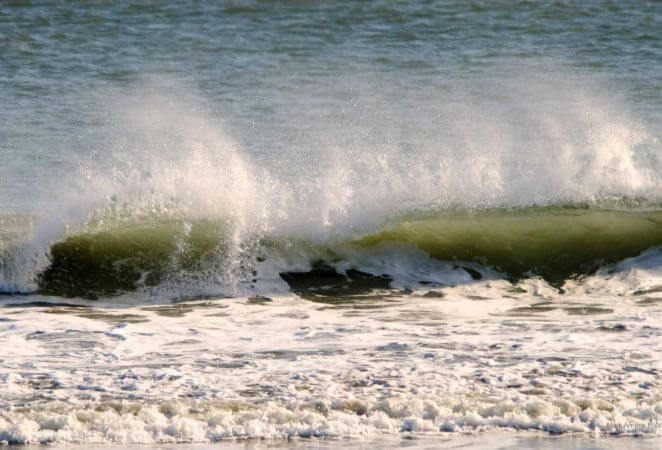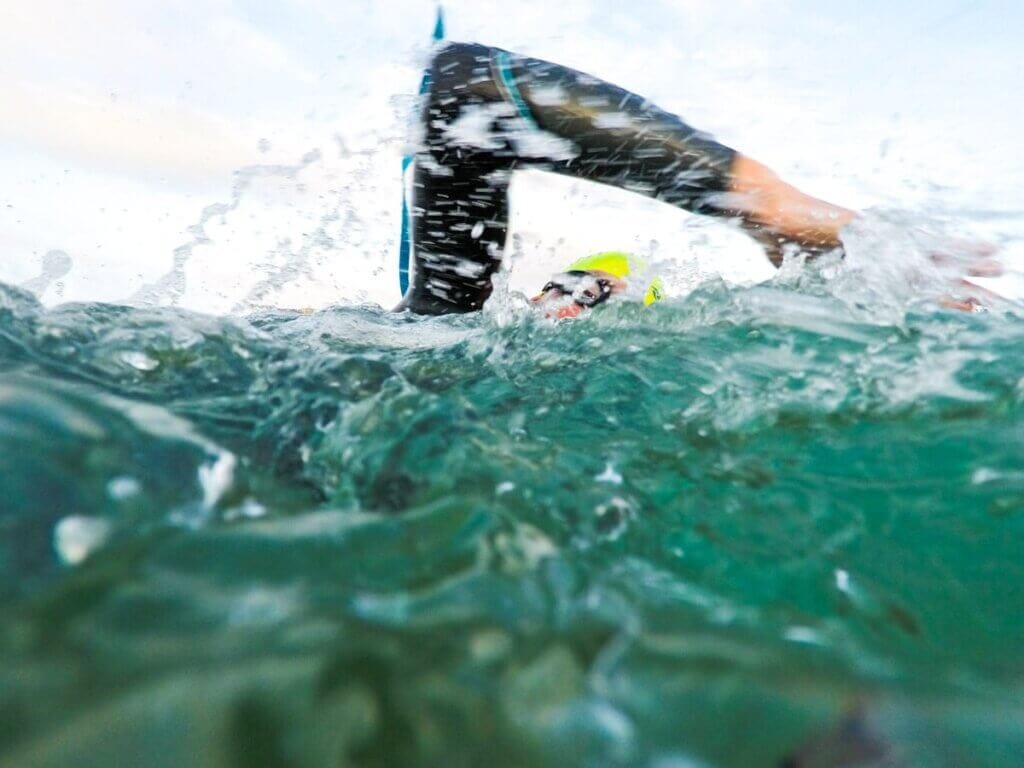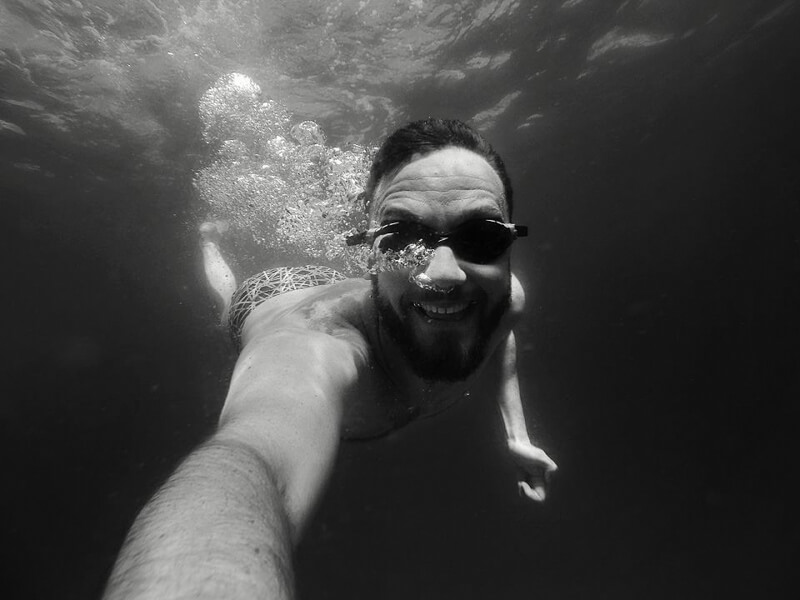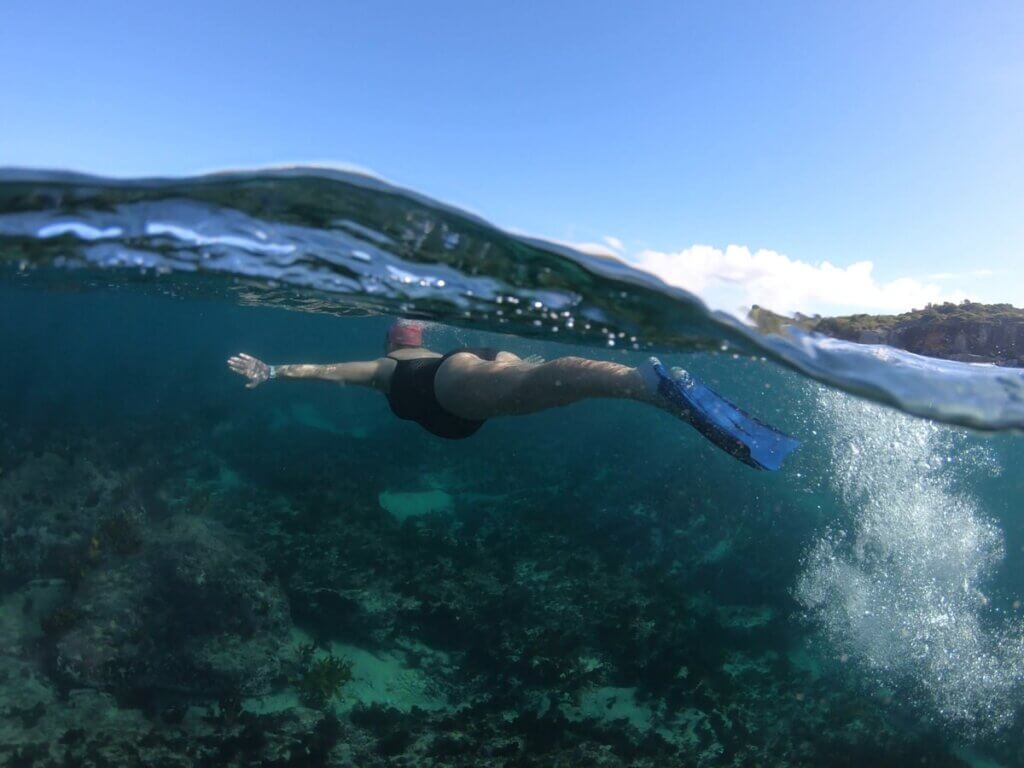Coriolis effect: When the water gets cold in summer

It’s the middle of summer, it’s stinking hot, so you head to the beach for a swim, jump in and the water is freezing. Yet the week before it was magic, so what’s going on? Quite a lot as it turns out.
Australia is lucky for a bunch of reasons including the fact that our surf beaches have pretty reasonable water temperatures year-round. In the summer months between December and April, the surface water temperatures from the Sunshine Coast all the way around to Melbourne around Sydney are usually between 17oC- 25oC, which is perfect for swimming.
But just as it takes a while for water in the pot to boil, it also takes a while for the ocean to heat up. For this reason, the ocean shows a steady increase in temperature from September onwards, finally peaking in March.
What these long term trends don’t explain is why the water can suddenly drop several degrees seemingly overnight and many of you in NSW will remember January 2007 when the water-dipped down to an icy and record cold 14oC in Sydney. Several swimmers suffered hypothermia, which is hard to believe when it was 30oC on the beach. Is this normal? Yes and no.
It’s mostly about the wind. On hot days, the surface of the land heats up faster than the surface of the ocean, air rises over the land and onshore winds rush in from across the ocean to replace it.
On most of the east coast of Australia, these sea breezes blow onshore from the northeast, usually kicking in around noon and lasting into the evening. While they ruin the surfing conditions for the day, they have little effect on how warm the water is.
However, summer is also prone to persistent periods of northeast winds, related to the strengthening of equatorial low-pressure systems, and these can last for several days.
You would think that coming from the north, these warm winds would also bring warmer surface water to the beach, but the opposite is true, the water actually drops a few degrees!
As my European oceanography professor once explained to me, this phenomenon is caused by ‘Ekman spirrell’. I think he meant spiral.
The Coriolis Effect
Anything that moves in a constant direction on the planet is affected by the Coriolis Effect which acts to deflect moving objects to the left in the Southern Hemisphere and to the right in the Northern Hemisphere. This is the reason why water supposedly spins down the toilet in different directions depending on what side of the equator you’re on.
This isn’t true of course since the moving object has to be much larger to be noticeably affected by the Coriolis effect, but as the persistent northeasters move large amounts of warm surface water towards the shore, this water gets deflected to the leftó_offshore and away from the beach.
It has to be replaced by something and large scale upwelling of deeper, colder water occurs which is then drawn towards the shore. It’s a little bit more complicated than this, but this whole process is termed Ekman transport and is referred to as a spiral because the resulting water movement literally spirals up from the bottom so that at the surface it is moving 90 degrees to the direction of the wind.

The good news for the southeast coast is that when the prevailing southeasterly wind and wave conditions kick back in, the warm surface water offshore is also deflected to the left, which in this case is back to the beach. And it’s back into the boardies for most.
Upwelling, therefore explains why water temperatures can suddenly drop a few degrees and the same thing happens if we have strong offshore westerlies that last for a few days and push the warm surface water offshore.
However, it doesn’t fully explain why we had such freezing water in the summer of 2007! This was caused by a giant eddy the size of Tasmania situated about 100 km offshore of Sydney that was swirling around like a whirlpool with a full rotation of 10 days. At its centre, the eddy caused an upwelling of very cold water from depths of almost 1000 m that spun around, eventually hitting the coast.
All of a sudden it was like swimming in New Zealand in the winter, never a pleasant experience. You may even remember that the water was noticeably greenish and cloudy, a result of the rich nutrients brought up from the depths. Although these eddies are not uncommon, they are difficult to predict and scientists are not sure how or where they develop, but when in place they can last for several weeks.
The good news is that they don’t impact on the quality of the waves. So maybe before you run to the beach in your boardies this summer, check the weather reports for winds over the last week and maybe even look up some satellite ocean temperature maps on the internet. You might need to grab a steamer.
First published December 2016






Thanks for the story Rob. Interesting reading. Also brings me back to coastal geomorphology 1o1 days at Uni of Syd.